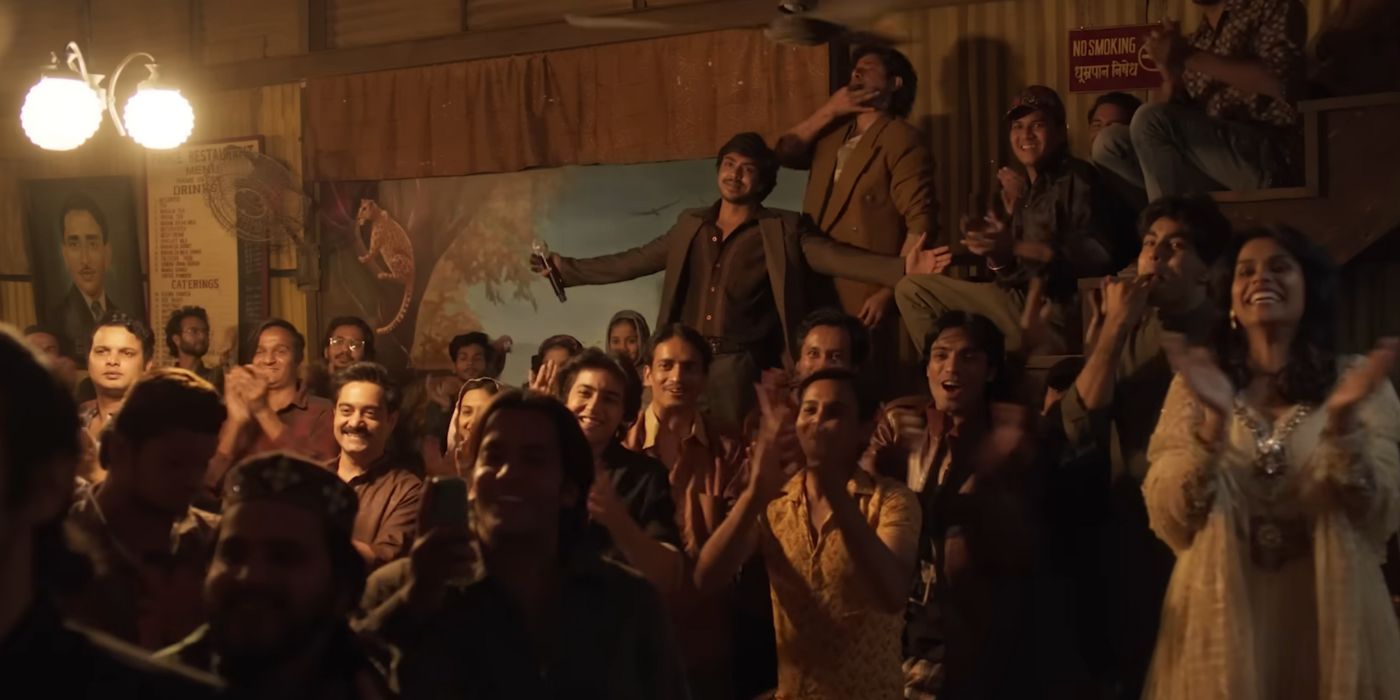While passion and commitment to one’s craft cannot be confined to one person, if the commitment to turning a dream into a reality through sheer dedication had a face, Steven Spielberg would fit the bill. In The Fabelmans, a semi-fictionalized memoir of his life, we see how young Sammy Fabelman grows up in a tight-knit, middle-class Jewish family and finds himself swept away by the magic of filmmaking. The underlying message is how a magnetic pull toward cinema can shape a life or even transform it.
Proving that true art knows no boundaries, another movie shows us how cinematic talent can open doors, reshape destiny, and even expose long-hidden family truths. A world away from mid-20th-century America, Superboys of Malegaon spotlights a similar spirit, anchored in a small Indian textile city. Directed by Reema Kagti (Talaash), produced by Zoya Akhtar, and written by Varun Grover (Gangs of Wasseypur), this Hindi biopic takes us into the life of Nasir Shaikh, whose relentless fascination with movies is every bit as powerful—and transformative—as Sammy Fabelman’s. This coming-of-age film, drawing inspiration from the 2008 documentary Supermen of Malegaon, stars Adarsh Gourav (The White Tiger), Vineet Kumar Singh, Shashank Arora, and Anuj Singh Duhan. The movie shows that storytelling is not just escapism but a path to genuine purpose, one that can elevate his life and those of the people around him.
What Is ‘Superboys of Malegaon’ About?
Superboys of Malegaon revolves around a group of film enthusiasts whose obsession with movies makes them decide to make one themselves. It just might be one of the most relatable, entertaining explorations of the creative impulse you’ll come across. Superboys of Malegaon draws on real-life events, introducing us to a small-town setting filled with movie-crazy dreamers. It tracks their hopes, hurdles, and resourcefulness in a concise, classic style and carries that energy straight to the final credits.
Gourav stars as Nasir, a wedding videographer who, with his brother, operates a tiny, do-it-yourself cinema showcasing eclectic film classics—think silent-era Chaplin and Keaton—much to the confusion of a local audience hungry for glossy Bollywood fare. Malegaon, a city in Maharashtra, is hardly known for its cinematic tradition. In fact, a larger theater just across the street plays current blockbusters, drawing long queues, while Nasir’s place struggles to sell more than a handful of tickets because, as one local says: “Chaplin’s mother didn’t send you here to screen her son’s work.”
After law enforcement abruptly shuts down one of Nasir’s screenings due to copyright concerns, he hatches a new plan: create his own low-cost spoof of Bollywood epics—like Sholay. He decides that he’ll make it on home turf, then screen it on his micro-cinema. While it’s partly a bid to stay afloat, it also springs from an innate desire to celebrate the magic of movies.
Nasir and his brother are intelligent, determined types who can draw posters by hand and craft rudimentary special effects, but neither is a natural writer. So Nasir enlists the help of Farogh (Singh), a budding journalist who’s itching to try his hand at screenwriting. Casting falls into place without much fuss. Some bits unfold exactly the way you’d expect (the audition montage is guaranteed to get laughs in any era), while other moments catch you off guard, illustrating how everyday reality—like bills or side gigs—inevitably intrudes on creative ambition.
At one point, the cinematographer bolts mid-shoot to film a wedding because rent and groceries don’t pay themselves. Later, when funds run dry, Nasir—under pressure from his producer—agrees to insert an ad for a locally made brand of matches into the film, enraging Farogh, who accuses him of selling out. “If you just wanted the money,” Farogh fumes, “I could’ve found some other way. But don’t cheapen your own movie.”
What’s intriguing about these clashes—like many others tackling the artistic process—is how no argument is entirely one-sided. Nobody is the clear hero or villain. Farogh can be rigid and self-important but defends a precious purity of vision. Nasir’s impulsive style occasionally drags people in without fully considering their sacrifices, yet he displays the unstoppable drive needed to get a movie made. Meanwhile, the reality is that cinema evolved in an industrial age, operating inside a wider commercial system that can complicate creativity. The best filmmakers somehow find that sweet spot of giving viewers what they crave while still pushing boundaries, staying personal, and never losing their voice.

Related
The 10 Best Coming-of-Age Movies of the 2020s, Ranked
“She was thinking about how, at the age of 30, she’d just compared herself to Bambi.”
‘Superboys of Malegaon’ Lays Bare the Emotional Toll Creativity Can Exact
Just like in The Fabelmans, where Sammy grapples with guilt over exposing secrets through his camera lens, Superboys of Malegaon similarly explores how an all-consuming love of filmmaking can strain relationships. The movie doesn’t shy away from showing the tragic losses and bureaucratic hurdles that Nasir and his friends endure. Yet, far from discouraging them, these hardships solidify the power of movies to unite people across seemingly unbridgeable barriers—be they generational, cultural, or economic.
Ultimately, both The Fabelmans and Superboys of Malegaon convey a singular truth: genuine passion can surpass all manner of constraints. For Sammy, filmmaking isn’t just a childhood hobby—it’s a calling that reshapes his entire world, giving him a way to confront personal and family conflicts. For Nasir, cheap cameras and improvised sets give birth to what locals dub “Mollywood,” a phenomenon that resonates beyond the narrow streets of his hometown. In each story, an artist’s early inklings of greatness prove that cinematic wonder can create new possibilities for success, no matter how improbable the odds.
Superboys of Malegaon is playing in theaters in the U.S.
Source link


